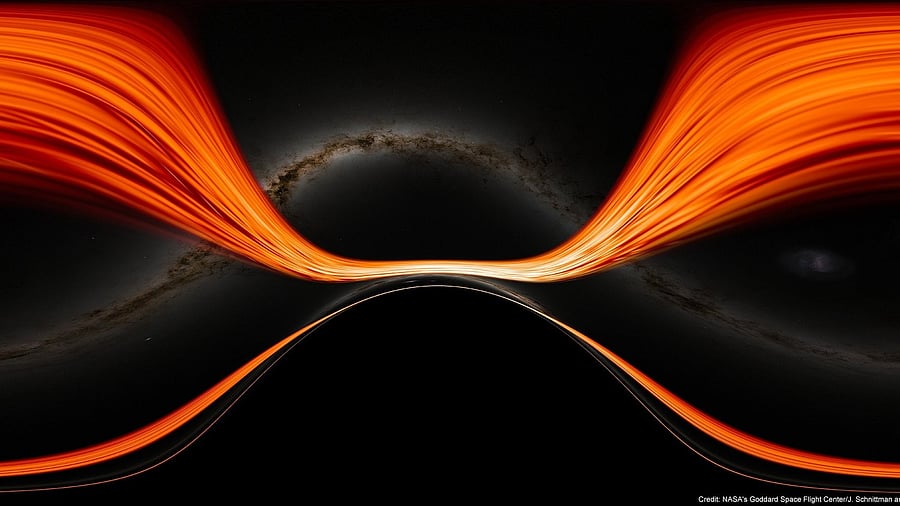
Black hole simulation by NASA.
Credit: X/@NASAUniverse
Since its discovery, the mystery of the black hole has intrigued both physicists and philosophers alike. In order to quell the curiosity of space enthusiasts, NASA has released a video, explaining in detail what happens when you go inside this enigma.
Christopher Nolan's Interstellar was one such film which explored the extents of the universe including the mystery of the black hole. Though it was fictitious in nature, it fanned one's curiosity leading them to ask—What happens when you go inside a black hole?
Thus, turning fiction into reality, the American space agency has prepared a 360 simulation which takes one into a supermassive black hole.
Jeremy Schnittman, an astrophysicist at NASA’s Goddard Space Flight Center in collaboration with Brian Powell led this project.
The video commences with the camera situated nearly 640 million kilometers away and the black hole coming into the view. As one approaches the black hole they can see an accretion disk surrounding it. This accretion disk is a swirling mass of hot gas which is used a reference point during the fall into the black hole.
The camera continues its journey towards the event horizon (the boundary at the outer edge of a black hole). It takes three hours for the camera to reach the event horizon. However, for a viewer it feels like the camera never touched the event horizon.
As the camera nears the event horizon, its image slows down and at one point it feels like the camera is frozen. Even the light which has entered the black hole becomes distorted.
NASA reported Schnittman saying that, “Once the camera crosses the horizon, its destruction by spaghettification is just 12.8 seconds away,” said. From there, it’s only 128,000 kilometers to the singularity.
Once the camera crosses the event horizon, it will automatically move towards the black hole's centre which is called a singularity ultimately leading to its destruction. It's at this point NASA says 'laws of physics cease to operate'.
In another far-fetched scenario, if the camera never crosses the Event Horizon then time will start to play its tricks. In a hypothetical situation if an astronaut flies near the event horizon, there will be no dilation of time for them. It will remain the same. However, for their colleagues (who are far away) time will slow down. Thus, when the astronaut returns, they will be younger than their colleagues.
